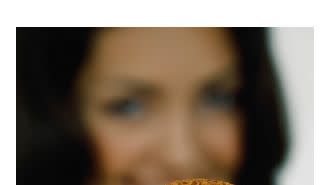Another Reason to Ditch Low-Carb Diets

Many of my clients send me their food diaries every day, in which they record not just what and how much they eat, but also their hunger and fullness ratings and how they feel before, during, and after meals. Over the years I've noticed a trend. Drastic carb cutting (despite my recommendation to include specific portions of "good" carbs), results in some not so pleasant side effects. I see journal notes like, cranky, irritable, shaky, lethargic, moody, and reports of intense cravings for forbidden foods. Now, a new study also indicates that low carb diets aren't optimal health wise.
A 25 year Swedish study published in Nutrition Journal, found that a switch to popular low carb diets was paralleled by a rise in cholesterol levels. In addition, body mass indices, or BMIs, continued to increase over the quarter of a century, regardless of diet. Certainly not all low carb diets are created equal; that is, a garden salad topped with salmon is much healthier than a steak cooked in butter. But in my opinion, getting carbs right is about both quantity and quality.
Carbohydrates are the most efficient source of fuel for your body's cells, which is probably why they're so abundant in nature (grains, beans, fruits, veggies). It's also why our bodies have the ability to stockpile carbs in our liver and muscles to serve as energy "piggy banks" called glycogen. If you eat too many carbs, more than your cells need for fuel and more than your "piggy banks" can hold, the surplus goes to fat cells. But cutting back too much forces your cells to scramble for fuel and throws your body out of balance.
The sweet spot, not too little, not too much, is all about portions and proportions. At breakfast and snack meals I recommend combining fresh fruit with modest portions of a whole grain, along with lean protein, good fat, and natural seasonings. At lunch and dinner, use the same strategy but with generous servings of vegetables rather than fruit. Here's an example of a balanced day's worth of meals:
Breakfast
One slice of 100 percent whole grain bread spread with almond butter, along with a handful of fresh in-season fruit, and a latte made with organic skim or non-dairy milk and a dash of cinnamon.
Lunch
A large garden salad topped with a small scoop of roasted corn, black beans, sliced avocado, and seasonings like fresh squeezed lime, cilantro, and cracked black pepper.
Snack
Fresh fruit mixed with cooked, chilled red quinoa or toasted oats, organic nonfat Greek yogurt or a dairy-free alternative, chopped nuts, and fresh ginger or mint.
Dinner
A variety of vegetables sautéed in extra virgin olive oil, garlic, and herbs tossed with lean protein like shrimp or cannellini beans and a small scoop of 100 percent whole grain pasta.
Including reasonable portions of good carbs, like the meals above, provides enough fuel to help you feel energized but not enough to feed your fat cells. And yes, you can even shed body fat by eating this way. My clients who attempt to cut them out completely inevitably give up or rebound binge eat and wind up gaining back all, or more, of the weight they lose. But striking a balance is a strategy you can live with.
How do you feel about carbs, low, high, good, bad? Please tweet your thoughts to @cynthiasass and @Shape_Magazine

Cynthia Sass is a registered dietitian with master's degrees in both nutrition science and public health. Frequently seen on national TV, she's a SHAPE contributing editor and nutrition consultant to the New York Rangers and Tampa Bay Rays. Her latest New York Times best seller is S.A.S.S! Yourself Slim: Conquer Cravings, Drop Pounds and Lose Inches.
